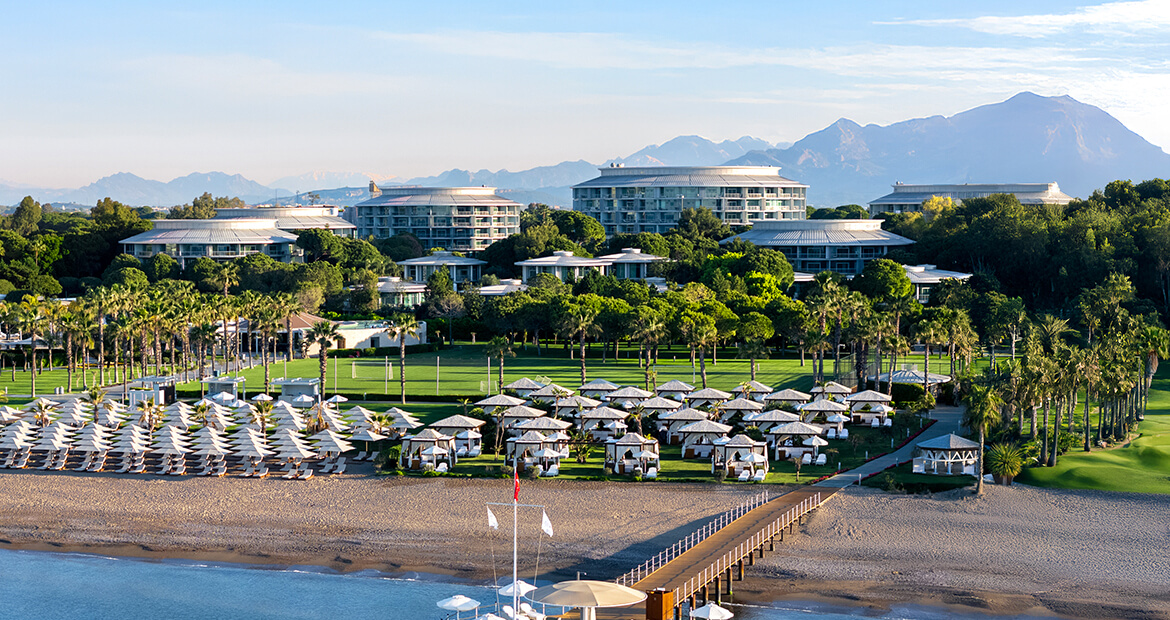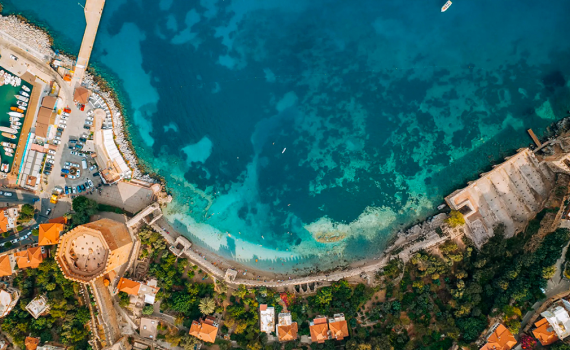The concept of sustainability, in today’s world, refers to preserving environmental, economic, and social balance in order to leave a more livable planet for future generations. This approach has become increasingly significant in the tourism sector, as tourism activities directly or indirectly impact natural resources, local cultures, and economic structures. Sustainable tourism seeks to balance these effects, ensuring lasting benefits for both travelers and local communities.
It minimizes the negative impacts of tourism and guarantees the responsible use of resources by prioritizing the protection of nature and cultural heritage. In this sense, the question “What is sustainable tourism?” may be answered as a form of tourism that is environmentally respectful, economically fair, and socially equitable.
At Calista Luxury Resort, this philosophy is embraced as a guiding principle of creating indelible value for both guests and the local community. The resort is committed to preserving natural and cultural heritage while ensuring that resources are utilized in a sustainable way.
Definition and Core Principles of Sustainable Tourism

Environmental preservation, economic fairness, and cultural respect lie at the heart of sustainable tourism. Indispensable environmental principles of sustainable tourism include protecting natural ecosystems, using water and energy resources efficiently, and minimizing waste.
Social and economic aspects are equally important. Ensuring that tourism revenues are fairly distributed among local communities, generating employment, and keeping cultural traditions alive are vital when it comes to sustainability. The question ‘Why is sustainability important?’ today arises from the urgent need to prevent environmental degradation and social inequalities caused by the rapid growth of tourism. Sustainable tourism, therefore, extends beyond impermanent profit goals, instead operating with a sense of permanent responsibility.
The basis of sustainable tourism is environmental protection, economic justice, and respect for cultural values. In line with these principles, Calista Luxury Resort focuses on energy and water efficiency, implements meticulous waste management systems, and prioritizes the preservation of natural ecosystems. At the same time, the resort ensures that tourism revenues benefit the local community, support employment, and actively contribute to the preservation of cultural values, seeing these as inseparable elements of social and economic sustainability.
What Is a Sustainable Tourism Certificate and How Is It Obtained?

A sustainable tourism certificate is an official recognition that confirms a business has fulfilled its environmental and social responsibilities. To obtain this certification, facilities must implement energy and water conservation practices, maintain comprehensive waste management systems, and take concrete steps to reduce their carbon footprint through accurate measurement and monitoring.
Additional requirements include promoting green transportation options and contributing to the local economy. Certification is granted following audits and evaluations conducted by independent organizations. In this way, it not only inspires confidence among travelers but also strengthens the competitive edge of certified establishments.
Sustainable tourism certification is a matter of priority at Calista Luxury Resort. Systems to save energy and water, waste management practices, and concrete steps to reduce carbon footprint are the basic criteria of this process. Furthermore, encouraging green transportation and contributing to the local economy are key elements of its sustainability commitments.
What Is the Difference Between Ecotourism and Sustainable Tourism?

Ecotourism is a specialized form of tourism that focuses on preserving natural environments and biodiversity, generally encompassing nature-based and low-impact tourism activities. Sustainable tourism, however, is a broader concept that not only includes ecotourism but also integrates cultural and economic dimensions.
The target of ecotourism is nature conservation and raising environmental awareness. In sustainable tourism, the balance of environment, economy, and culture is considered across all components of tourism activities. Therefore, the difference between ecotourism and sustainable tourism lies in their scope and areas of focus.
While ecotourism emphasizes protecting nature and fostering environmental consciousness, sustainable tourism adopts a wider perspective that also incorporates cultural and economic dimensions. Calista Luxury Resort combines the strengths of both approaches, offering guests an experience that is both eco friendly and deeply connected to local culture.
Sustainable Tourism Practices

Sustainable tourism practices are comprehensive strategies designed to balance the environmental, economic, and social impacts of tourism, aiming to deliver lasting benefits without harming nature, culture, or local economies. Above all, energy and water conservation are critical to environmental sustainability. Tourism facilities increasingly adopt LED lighting, motion sensor devices, and renewable energy sources to enhance energy efficiency.
To protect water resources, water-saving showerheads, automatic faucets, and greywater recycling systems are implemented. Waste management is vital when it comes to the importance of sustainable tourism. Recycling and composting methods can reduce overall waste generation. Minimizing plastic use, prioritizing reusable materials, and avoiding single-use products all help to ease the burden on the environment.
At Calista Luxury Resort, sustainable tourism is supported through strategies such as energy efficiency, water conservation, waste management, and carbon footprint reduction. LED lighting, motion sensor systems, and renewable energy are used throughout the facility. Water-saving fixtures and greywater recycling systems are applied, while recycling and composting practices are embraced. Plastic use is kept to a minimum, and reusable materials are favored.
Efforts to reduce the carbon footprint are among the most critical aspects of sustainable tourism. Green transportation options are preferred in tourism activities to lower fossil fuel consumption. Public transportation, bicycles, and electric vehicles are encouraged. In planning tourism destinations, the protection of nature and ecosystems is prioritized, with measures in place to prevent overcrowding and the degradation of natural areas. Visitor capacity is therefore limited, and environmentally friendly alternative tourism activities are promoted.
The promotion of green transport plays an important role in lowering carbon emissions. Calista Luxury Resort guides its guests towards low-emission alternatives such as bicycles, electric vehicles, and public transport. Visitor capacity is managed to avoid increasing pressure on the environment, with the protection of natural areas as a top priority.
For economic sustainability, local communities must share in tourism revenues. Tourism enterprises contribute directly to regional economies by sourcing local products and services. Moreover, supporting cultural offerings such as local guiding services and handicrafts is significant regarding both economic and social sustainability. On a social level, respect for local culture, protection of cultural heritage, and community involvement in decision-making are indispensable elements of sustainable tourism.
Another noteworthy key is the increased use of technology in sustainable tourism practices. Smart systems optimize energy and water consumption, while digital platforms make tourism activities more efficiently organized. This prevents the overuse of resources and minimizes environmental harm. Additionally, awareness-raising and educational initiatives aimed at enhancing visitor environmental consciousness form an integral part of sustainability efforts.













